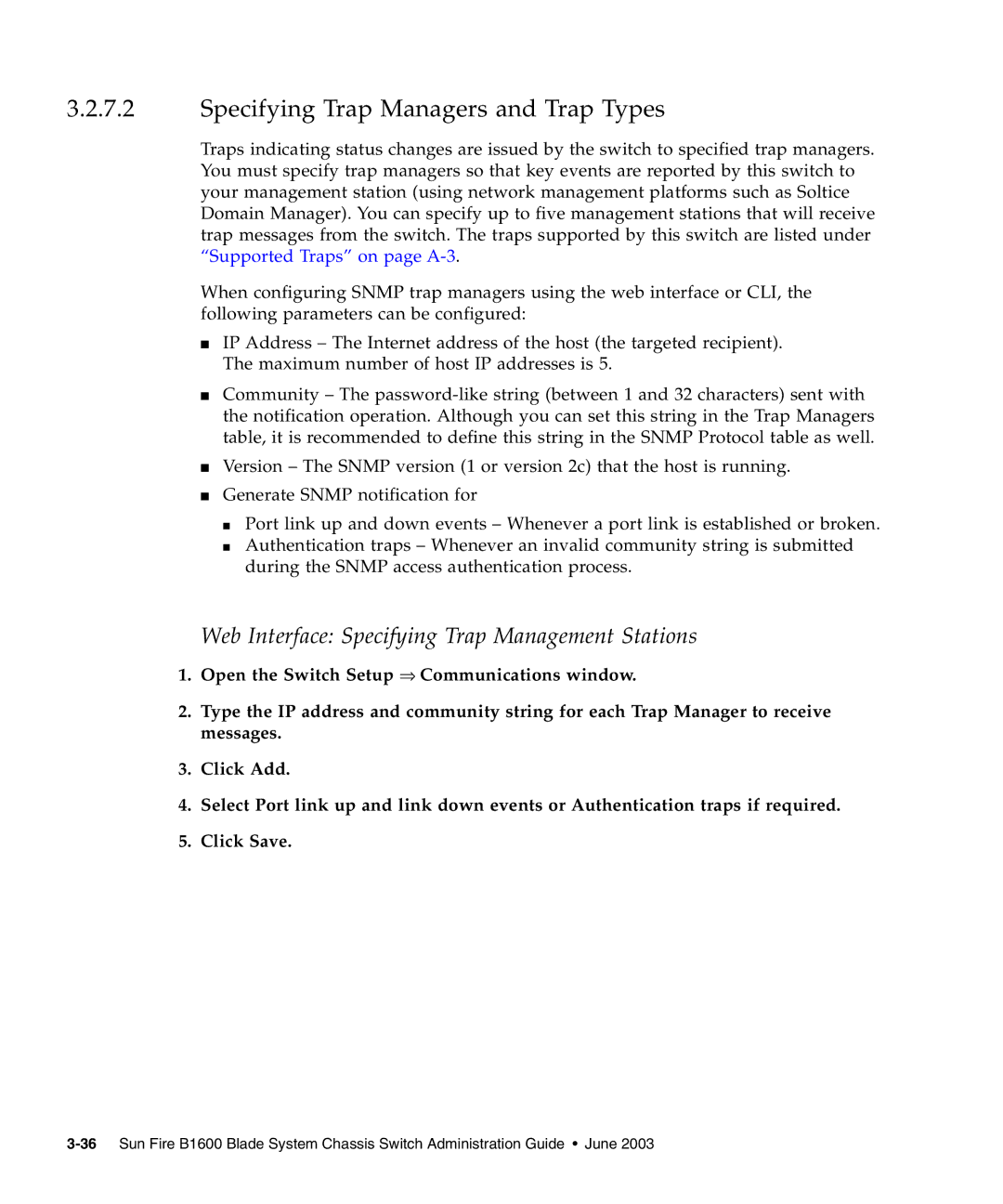3.2.7.2Specifying Trap Managers and Trap Types
Traps indicating status changes are issued by the switch to specified trap managers. You must specify trap managers so that key events are reported by this switch to your management station (using network management platforms such as Soltice Domain Manager). You can specify up to five management stations that will receive trap messages from the switch. The traps supported by this switch are listed under “Supported Traps” on page
When configuring SNMP trap managers using the web interface or CLI, the following parameters can be configured:
■IP Address – The Internet address of the host (the targeted recipient). The maximum number of host IP addresses is 5.
■Community – The
■Version – The SNMP version (1 or version 2c) that the host is running.
■Generate SNMP notification for
■Port link up and down events – Whenever a port link is established or broken.
■Authentication traps – Whenever an invalid community string is submitted during the SNMP access authentication process.
Web Interface: Specifying Trap Management Stations
1.Open the Switch Setup ⇒ Communications window.
2.Type the IP address and community string for each Trap Manager to receive messages.
3.Click Add.
4.Select Port link up and link down events or Authentication traps if required.
5.Click Save.
